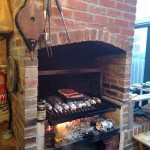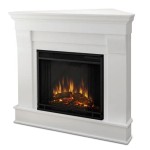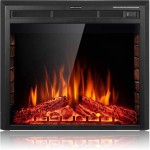DIY Gas Outdoor Fireplace: A Comprehensive Guide
An outdoor fireplace provides a captivating focal point for any backyard or patio. The allure of dancing flames, the warmth it radiates, and the ambiance it creates make it an ideal gathering spot for friends and family. While professionally installed gas fireplaces can be costly, constructing a DIY gas outdoor fireplace offers a cost-effective and personalized alternative. This article details the key steps, considerations, and safety precautions involved in building your own gas-powered outdoor oasis.
Before embarking on this project, it’s crucial to understand the complexities involved. Working with gas lines requires a high level of competence and precision. If there’s any doubt about one's ability to safely handle gas connections, it is strongly recommended to consult a licensed professional gas fitter. Improper installation can lead to gas leaks, explosions, and serious injuries. This guide offers a general framework; local building codes and regulations should always supersede any information presented here.
Planning is paramount to a successful DIY gas fireplace project. This process encompasses selecting a suitable location, determining the desired size and style, and obtaining all required permits. These initial preparations can save time, money, and potentially hazardous situations later on.
Choosing the Right Location and Design
The location of the fireplace will largely determine its usability and impact on the outdoor space. Several factors should influence the decision-making process. First, consider proximity to existing structures. Fire codes typically require a minimum distance between the fireplace and any combustible materials, such as fences, sheds, or overhanging trees. Wind direction is another critical consideration. Positioning the fireplace so that prevailing winds carry smoke and heat away from seating areas or the house will enhance comfort. Assess the ground's stability. The fireplace will be heavy, so a level and stable base is essential. If the ground is uneven or unstable, it may require reinforcement with compacted gravel or a concrete pad.
Design choices allow for personalization of the fireplace. Common styles range from traditional brick or stone fireplaces to more modern, minimalist designs using concrete blocks or metal. Consider the overall aesthetic of the outdoor space and select a design that complements it. The size of the fireplace should be proportionate to the surrounding area. A large fireplace in a small yard can feel overwhelming, while a small fireplace in a large yard may lack visual impact. Sketching a design and creating a scale model can help visualize the finished product and identify potential issues before construction begins.
Proper ventilation is critical for any outdoor fireplace. The design should allow for adequate airflow to ensure complete combustion of the gas and prevent the buildup of carbon monoxide. Consult local building codes for specific ventilation requirements. The materials used for construction should be fire-resistant and durable enough to withstand the elements. Common materials include firebrick, concrete blocks, natural stone, and stainless steel. These materials will help to withstand the heat and prevent the fireplace from deteriorating over time.
Gathering Materials and Tools
Once the design is finalized, the next step is to gather the necessary materials and tools. A comprehensive list is essential to avoid delays and ensure a smooth construction process. Accurate measurements are also required in order to avoid purchasing too much or too little materials.
Essential materials typically include: Concrete blocks or bricks, Firebrick, Mortar, Gas line components (pipe, fittings, shut-off valve), Gas burner kit, Lava rocks or fire glass, Gravel, Sand, and a Concrete mix (if pouring a foundation).
The specific tools required will depend on the chosen design and construction techniques. Commonly needed tools include: Shovel, Wheelbarrow, Level, Measuring tape, Trowel, Brick hammer, Safety glasses, Work gloves, Pipe wrench, Gas leak detector, and a Concrete mixer (optional).
Purchasing high-quality materials is an investment in the longevity and safety of the fireplace. Opt for fire-rated materials specifically designed for high-temperature applications. When selecting gas line components, ensure they are compatible with the type of gas being used (natural gas or propane) and comply with local codes. It is best practice to consult with a gas professional or a knowledgeable sales representative to ensure the correct components are selected for the given application.
Construction and Gas Line Installation
The construction process typically involves building the fireplace structure, installing the gas line, and adding the finishing touches. Each step requires careful attention to detail and adherence to safety guidelines.
Begin by preparing the foundation. Excavate the area to the desired depth and compact the soil. Pour a concrete pad or create a gravel base for added stability. Lay the first course of concrete blocks or bricks, ensuring they are level and properly aligned. Apply mortar between each block or brick, using a trowel to create a smooth and even joint. Continue laying courses, staggering the joints for added strength. Construct the firebox using firebrick, which is specifically designed to withstand high temperatures. Apply mortar between each firebrick, ensuring a tight seal to prevent heat from escaping.
Gas line installation requires meticulous attention to detail and strict adherence to safety precautions. If an existing gas line is available, have a qualified professional tap into it. If a new gas line is required, contact the gas company for installation. Install a shut-off valve near the fireplace for easy access in case of an emergency. Connect the gas line to the gas burner kit according to the manufacturer's instructions. Use pipe thread sealant to ensure a leak-proof connection. After connecting the gas line, test for leaks using a gas leak detector. Apply a soapy water solution to all connections and watch for bubbles. Any sign of bubbles indicates a leak that needs to be addressed immediately. Never use an open flame to check for gas leaks.
Once the structure is complete and the gas line is installed and tested, add the finishing touches. Fill the firebox with lava rocks or fire glass, which help to distribute the heat and create a visually appealing flame. Consider adding decorative elements such as stone veneer or tile to enhance the aesthetic appeal of the fireplace. Install a spark screen to prevent embers from escaping and potentially causing a fire hazard.
Consulting with local building officials throughout the construction process can help ensure compliance with all applicable codes and regulations. This can prevent costly rework and ensure the safety of the finished fireplace.
Before lighting the fireplace for the first time, inspect the entire system. Ensure that all connections are tight, the gas line is properly purged, and the area around the fireplace is clear of any flammable materials. Light the burner according to the manufacturer's instructions and monitor the flame for any irregularities. If the flame is too high, too low, or uneven, adjust the gas supply accordingly. Never leave the fireplace unattended while it is burning.
Regular maintenance is essential to ensure the safety and longevity of the fireplace. Inspect the gas line and connections periodically for any signs of leaks or damage. Clean the burner and firebox regularly to remove any debris or buildup. Have the fireplace professionally inspected and serviced annually to ensure it is operating safely and efficiently.

How Do I Build A Diy Fire Pit For Natural Gas Starfire Direct

How To Build A Gas Fire Pit Woodlanddirect Com
:max_bytes(150000):strip_icc()/chrisjulia-971f3f9eb708447bbd364fc7f4a16280.jpg?strip=all)
10 Free Outdoor Fireplace Construction Plans

How To Make An Outdoor Gas Fireplace With Diy Pete

Diy Outdoor Fire Table Hamilton Park Home

How To Build A Gas Fire Pit In 10 Steps Homeadvisor

How To Build An Outdoor Fireplace Step By Guide Buildwithroman

Bronson Block Round Diy Gas Fire Pit Kit

How To Plan For Building An Outdoor Fireplace

How To Make An Outdoor Gas Fireplace With Diy Pete
Related Posts








